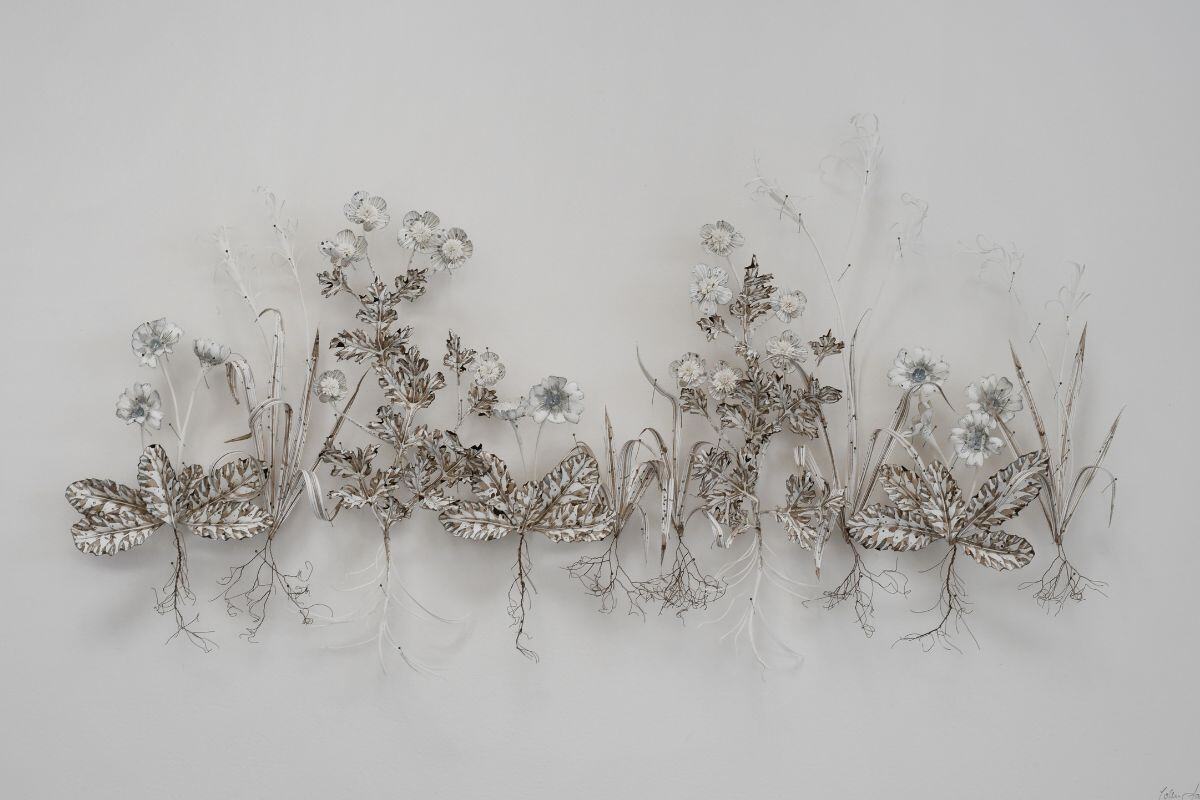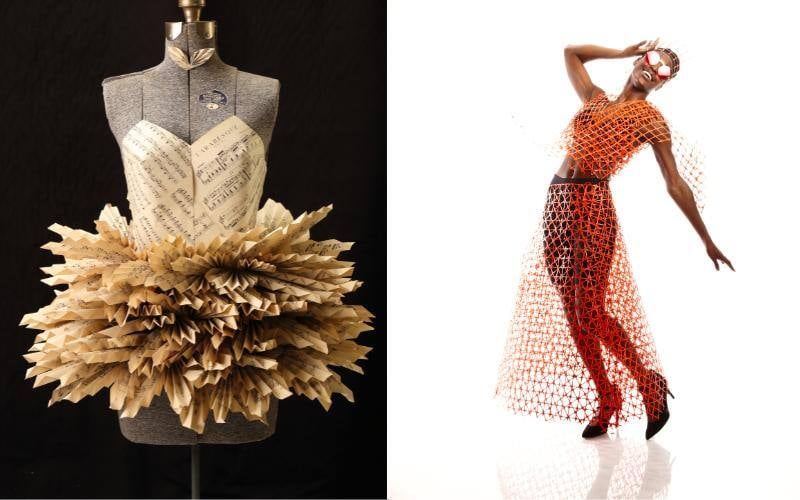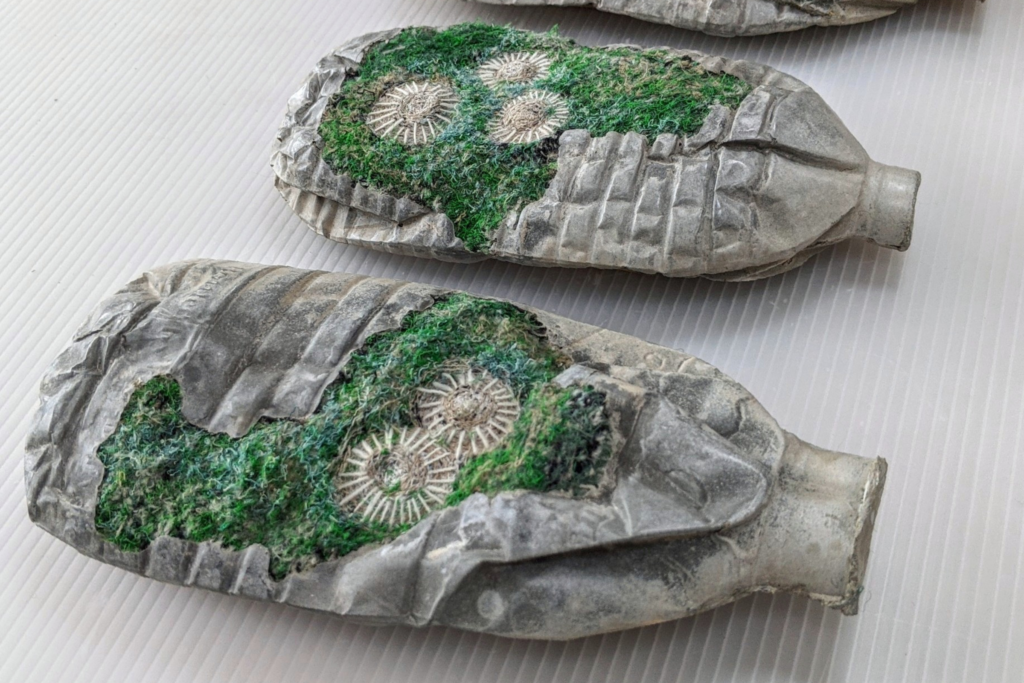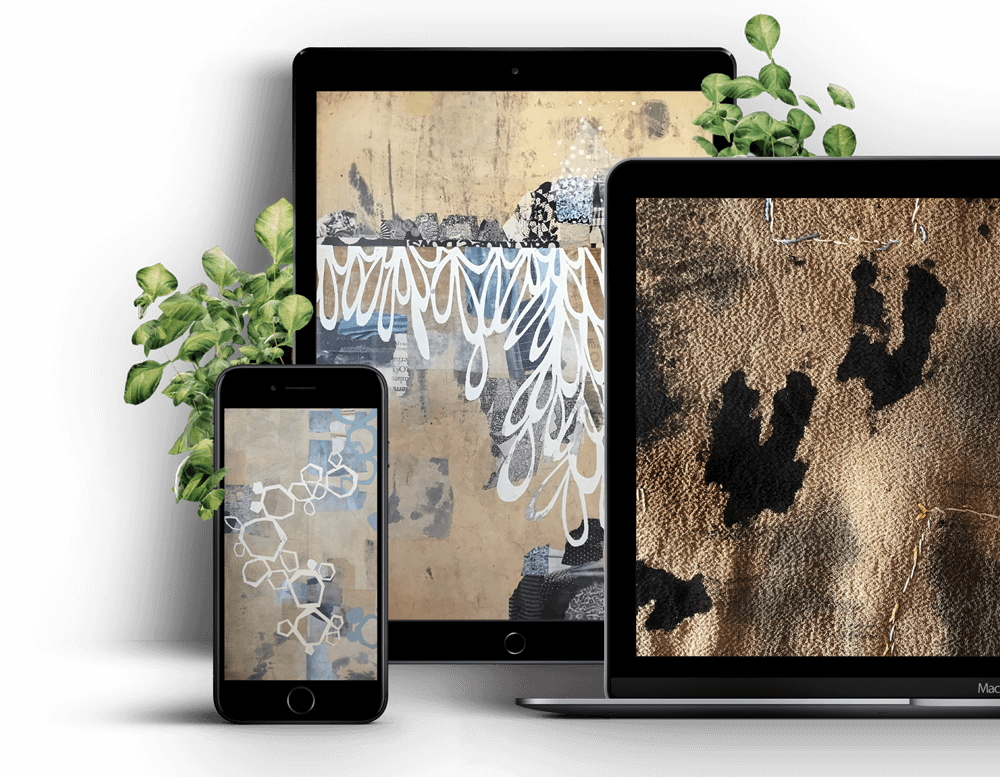Cordula Kagemann: Circles and Horizons
Cordula Kagemann’s Friday Feature Art Interview can be found at the bottom of this page.
Starting as an abstract painter and art teacher, predominantly working with egg tempera, German artist Cordula Kagemann thought painting would be her passion.
Then one day, many years ago, at the Guggenheim Museum, a spark was ignited, and collage found her. With collage came opportunities to explore other methods of working with paper, paint and textiles, including making her own paper. Even after more than 16 years of developing her unique techniques and processes, Cordula focuses on collage and its endless possibilities. Cordula describes collage as “a puzzle that needs solving”.
Here’s a rundown of Fibre Arts Take Two’s recent conversation with this renowned artist.
The Magic of Collage
Collage is an art form that Cordula finds endlessly rewarding. “Taking things in your hands,” she says, “And then putting it together in a way that hasn’t been before, it’s kind of magic. You bring it together, and suddenly it looks like it was supposed to be like that all along. That’s what I really love.”
Of course, it still takes hard work to create magic. Cordula says, “It’s not always that easy. Sometimes it takes a little bit longer. You have to build to bring the pieces together. But that’s the interesting thing about it. I can express everything in a collage that you would express in any other medium, like painting or sculpture.”

Textiles and Collage
“I always worked with textiles,” Cordula says, explaining why she incorporates fibre arts into her collage work. “When I was 16, I took a sewing class and started to make my own clothes. Later, I went to textile school for two years, so in my 20s, I made all my clothes and things myself. It was really important in my youth to have that kind of creativity with textiles. I think that’s why it’s stayed for me and somehow found its way back into my art.”
The Abstraction of Daily Life
Many people wonder what inspires an abstract artist’s visual style. For Cordula, it is everything around her. “A lot of what we do in finding abstract expression in shapes and things like that come from what we see in our daily life, the landscape, and the area where you live. I always have horizons in many of my works, and that’s what I’m very drawn to. I live in a flat area in northern Germany. When we bought the house, I always wanted to see the horizon. It inspires me, and that’s just one example.”
Like many abstract artists, Cordula takes inspiration from the natural world. “Trees always find a way into my work. In the trees, you find all the lines; there’s so much that you can use in finding shapes, for example, just watching what all the branches and twigs do. It’s everywhere around you. You must find different techniques to bring that into your work.”
Bringing The Plan Into Form
Creating collages is something of an organic experience for Cordula. “I have an idea, or sometimes I have a plan. It depends on what I’m doing. But then bringing that plan into a form of a collage is a challenge. It doesn’t always come out exactly as planned, and it shouldn’t.”
The plan is not what is most important to Cordula; the process itself is part of the magic. “I think it should find its own path and develop in the process. But I almost always work in series, and then I have a starting point from the work I did before. And how do I want to go with the next one? To not be exactly the same but different. Then that’s when I have an idea about how it should look. And then I start to work in that direction to bring that idea into form.”

Coming Unstuck
Cordula keeps her creativity bubbling by having multiple pots on the boil.
“I start often with five or six works at the same time. Then I can go back and forth and maybe ideas come for more. It can take a long time until one of them is actually finished. At some point, I know now I have to finish this because it’s advanced fine enough for me to do the final touches.”
“It’s the best way to do it for me because I don’t get stuck that way.” Cordula says, “If you’re focused just on one work, it’s very easy to get stuck at some point. When you have several, you just go over to the next when you’re at a point where you don’t know how to continue, just go to the next work.”
Circular Composition
A common motif in Cordula’s work is the circle. “When I started out painting, circles started to appear. I think it’s symbolic of a cycle of life. It’s the beginning and the ending and the beginning again. It stands for many things also in different cultures, but everything is cyclical in nature and that’s what a circle represents for me in my work.”
The talk of circles leads naturally to thoughts on composition. Having studied visual arts, Cordula is well versed in the rules of composition. “I have learned a lot about the composition of artwork,“ she says, “So I think it’s in me. Everything I’ve learned comes out when I work.”
While Cordula often starts her work with the classical theory of the Golden Mean, she advises not taking the rules too seriously. “I think it’s very important in composition to trust your own intuition. It’s the mixture of both your intuition and knowing the rules. But if you work strictly to the rules, it would be so boring and we all would do the same artwork. It’s the same in life; don’t stick to rules all the time.”
Keep on Doing
Cordula’s advice to aspiring artists is to maintain forward momentum. “I think that daily practice is really important. Even if you don’t have much time to do things, just go into the studio. Look at your work, connect to your work and maybe just try to do something in a sketchbook. That’s what I would do. It’s important because if you lose that connection, it can be very difficult to get back in, and then you start questioning the things you’re doing. Keep that connection up and stay with the things you are doing and you probably won’t lose the thread.”

About the Artist
Cordula’s art reflects how she experiences life, a way to express what she is feeling but can’t always put into words. She collects memories, places and observations that manifests in her collages at the right time. Realising that she didn’t need to seek themes for her artwork outside of herself gave her the freedom to find the resources and ideas for a continuous process of art-making.
Based in Germany, Cordula lives in an almost 300-year-old converted farmhouse surrounded by nature. It is the centre of her life and her artwork, which authentically reflects the subtle colours and gentleness of her life in the countryside in an abstract manner. Cordula’s artwork is testament that it can be the very usual things that inspire great artworks. A morning fog, a tree, a shadow, the lines of architecture. It’s about capturing the essence of the every day, whilst allowing memories to fade in and out.
This inspiring artist studied visual arts at the University of Bremen and has worked as a freelance visual artist and art educator since 1998. As an art instructor, Cordula has taught collage and paper arts throughout Europe and abroad. She’s a member of the International Association of papermakers and artists since 2004, and has exhibited her art in many solo shows around the world.
Notifications
Join Our Newsletter
OUR YOUTUBE CHANNEL
View our interviews and more on our Youtube channel!
OUR FACEBOOK GROUP
Join our Community and stay updated with our upcoming announcements!




